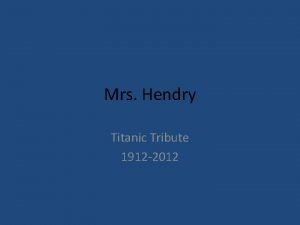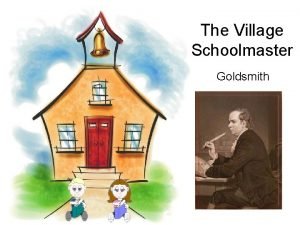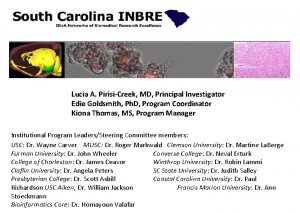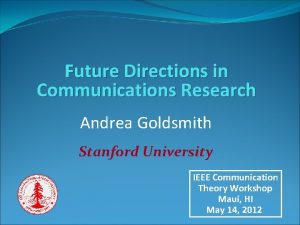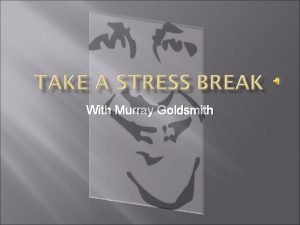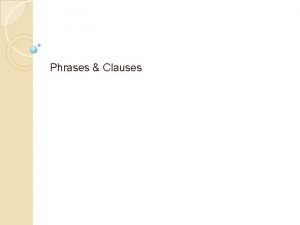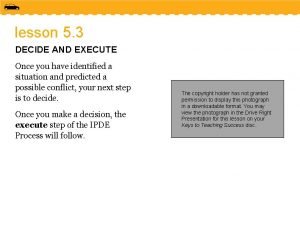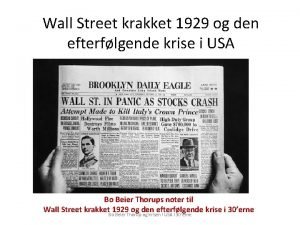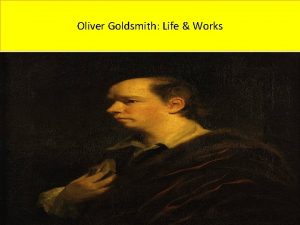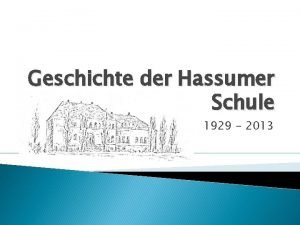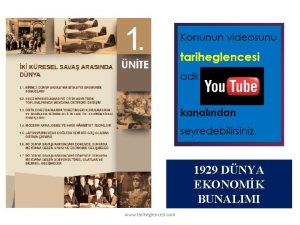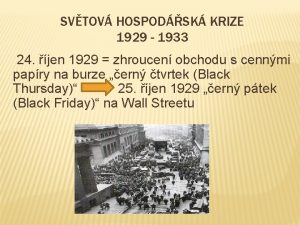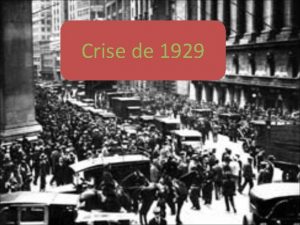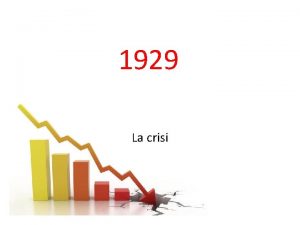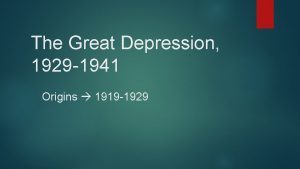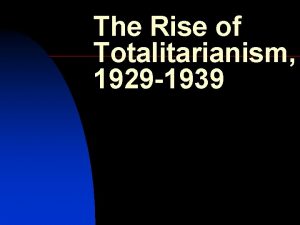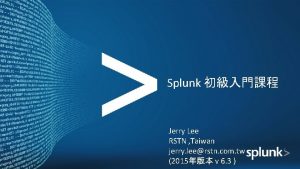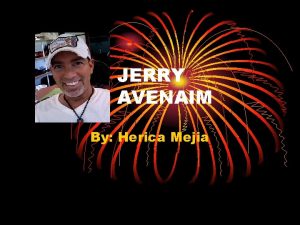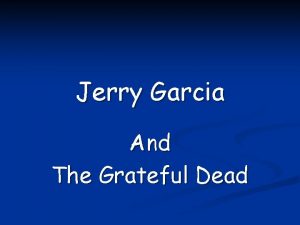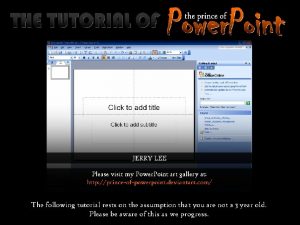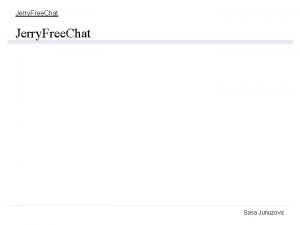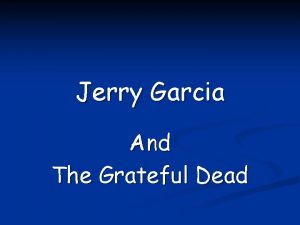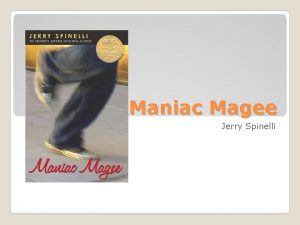Jerry Goldsmith 1929 2004 Jerry Goldsmith You may




















- Slides: 20

Jerry Goldsmith 1929 -2004

Jerry Goldsmith You may not recognize his face, but you will recognize his music.

Beginnings Born 2 -10 -1929 in Pasadena, CA. Mother, Tessa Rappaport an artist. Father, Morris Goldsmith an engineer. Began studying piano at 6. Became serious about it at 11. First huge inspiration: Alfred Hitchcock’s “Spellbound”- Miklos Rozsa musical score. Age 14.

Feeling Inspired At 14 Goldsmith saw “Spellbound. ” He said he came out of the film, mesmerized by Miklos Rozsa score. That score inspired him and he realized that he wanted to start a music career in film.

College Experience First attended USC and had a course taught by his first inspiration Rozsa. Quickly left because he didn’t like the curriculum. Attended Los Angeles City College Was able to learn more practicle skills in musicianship Earned money as a piano accompanist Worked as an assistant choral conductor/director.

The Start of a Beautiful Career 1950, composing and conducting for radio dramas like CBS Radio Workshop. TV- live and recorded. Climax!, Playhouse 90, Twilight Zone. Began to score the TV series Thriller (1960 -62) and Dr. Kildare (196166). First film was a minor western in 1957, Black Patch. Oscar nomination for 1962’s, Freud.

Big Break 1962, Goldsmith met Alfred Newman, renowned film maker. Newman coerced Universal into hiring Goldsmith to score a western Kirk Douglas film, Lonely are the Brave (1963). Became very widely sought after for his musical talents. Became a contract composer for 20 th Century Fox.

Musical Chameleon Goldsmith often referred to himself as a “musical chameleon”. He could easily change his style to match the demand. One of the first to use synthesizers in Hollywood. Loved to try unusual instruments and unique sounds. Did an all electronic score for a sci-fi thriller Runaway. Sucessfully mixed orchestra and electronics.

You might know him from…. . The Wind and the Lion Chinatown The Wild Rovers Papillon The Omen (won his only Oscar for this score) If those don’t ring a bell, how about this one? Star Trek: The Motion Picture Most famous of his musical scores. Was the toughest he ever had to write and a remarkable achievement. He continued and wrote the scores for Star Trek: The Next Generation and Star Trek Voyager.

Legacy Goldsmith wrote over 175 original film scores over the course of 5 decades. Nominated for 17 Academy Awards Nominated for 9 Golden Globes Won 5 Emmy Awards My favorite movies he wrote scores for: Rambo: First Blood (1982) Hoosiers (1986) Rudy (1993) U. S. Marshals (1998) Mulan (1998) The Mummy (1999)

The Man Behind the Music Was first married to Sharon Hennagin, years after leaving formal schooling. They had 4 children together. Married second wife in 1972, Carol Heather. Had 1 child together. Absolutely loved music and writing scores. Continued to write film scores, until he passed away on July 21 st, 2004 when he lost a very long battle with colon cancer. Passed away peacefully in his sleep in Beverly Hills at age 75.

Composition History “Ba’Ku Village” – Star Trek: Insurrection Film was done in 1998, one of the later Trek films, the 9 th in the franchise. Goldsmith’s 4 th for the franchise. This song includes the “Theme from Star Trek” The TV Series and The Motion Picture. The album Star Trek: Insurrection was released in 1998 by GPN Cresendo Records.

Composition History, cont. Also from Star Trek: Insurrection, “The Drones Attack. ” A crucial and suspenseful chapter of the score. Intense song that promotes a fearful feeling, panic, and anxiety. Song was produced on the same film album. Both songs from Insurrection were orchestrated by Alexander Courage and conducted, composed, and produced by Goldsmith.


Composition History, Cont. “Avi Satani”- The Omen (1976) Only score to ever win him an Oscar, Best Original Score. Very evil feeling to this song. Short, only 2: 36 long. Loud Latin shouting and chanting over the top of dark methodical orchestral music. May have been inspired by John Barry, who for a time wrote heavy, brutal music for orchestra and chorus. Song performed by The National Philharmonic Orchestra Conducted by Lionel Newman Released on The Omen Soundtrack by 20 th Century Fox in 1976.


Listen Guides “Ba’Ku Village” Introduction- The tempo is adagio and the instruments are introduced one at a time. First a horn followed by a violin. 0: 52 – The rhythm and melody completely change. The tempo becomes allegro and the dynamics become clear, crisp and airy. 1: 06 – The flute is introduced over the top of the melody already being played. The two are played together at the same time. The first part is low and fast and staccato while the second is higher and smooth, very connected. The obvious differences create beautiful consonance. 3: 04 – The feeling completely changes. Tempo slows to adagio, and the scale changes. The melody also changes. Drums beat, and create a march. The range is very small. 4: 14 - Crashing, dynamics are loud and crashing again, and then the marching begins again, very even rhythm. Marching continues as the tempo slowly builds back up again as well as the dynamics. Melody plays atop the marching beat. 5: 51 - Drums beat, cymbals crash, The tempo slows, and the beat is very staccato. The tempo grows slower, and the melody fades in the background as the dynamics grow very soft. Electronic sounds slide down the scale. 6: 33 - Entire orchestra comes in very strong dynamic, rhythm at moderato and comes together very briefly for beautiful harmony to end the selection. 6: 52 – Song Ends

“The Drones Attack” Introduction: Music begins with very loud dynamic pulses in the beat, marching created by the rhythm and the tempo is moderato. Different instruments are slowly introduced, the horn. 1: 24 - Dynamics are very strong and loud, same notes played over and over in a very staccato striking fashion. This creates an obvious sense of panic/attack. 2: 24 - The melodies tempo picks up the pace and the rhythm remains constant and staccato. The dynamics grow loud and strong again in a stronger staccato beat, signaling another attack. 3: 05 - The melodies dynamic continue to grow much louder and more overpowering. Its tempo is sped up just slightly as if in anticipation. 3: 34 - The marching beat pulses low again, and its dynamics are very loud. The rhythm is staccato and sharp once again. Then the marching and the melody completely grow dim, the dynamics fade out completely. 4: 13 – Song Ends

“Avi Santani” Introduction - Heavy chanting in Latin. Very masculine voices, feels very dark. Piano plays a few strong notes underneath the chanting. 0: 30 - Rhythm really begins, very strong. Deep, very loud dynamics marching beat plays below the masculine chanting. The melody is played before, in a very strong march. 1: 18 - Female chant again the males. The dynamic is still quieter than the males, sound like a sigh. The marching beat continues low and steady in rhythm. Tempo picks up a bit, begins to become faster. 2: 00 - The chanting grows steadily louder and louder in dynamics. The female’s dynamics grow and grow, and continue up the scale till it’s almost a shriek. The marching beat being played grows in dynamic and tempo picks up slightly. The rhythm is still pulsating and very even. 2: 12 - The tempo slows way down, to adagio. The marching beat stops, and the chants dynamic diminishes. Chanters harmonize together, and then completely fade out. 2: 36 – Song Ends

References Crowdus, G. (1996). Film Music Masters: Jerry Goldsmith. Cineaste, 22(1), 55 Velez, A. (n. d. ) [Artist Interview with Jerry Goldsmith]. Barnes & Noble. com. Retrieved from http: //music. barnesandnoble. com/search/interview. asp? CTR=7251 (N. D. ) Jerry Goldsmith Biography. Retrieved from http: //www. jerrygoldsmithonline. com/biography. htm Fitzpatrick, J. (2000, February). Goldsmith, Jerry. American National Biography Online. Retrieved from http: //www. anb. org/articles/18/18 -03841. html July 29 th, 2009. The Omen, Editorial Review. Retrieved from http: //www. filmtracks. com/titles/omen. html#availability
 Wherever you may lead i will follow
Wherever you may lead i will follow Andrea j. goldsmith
Andrea j. goldsmith Frankie goldsmith titanic
Frankie goldsmith titanic Andrea goldsmith wireless communications
Andrea goldsmith wireless communications The village parson poem by oliver goldsmith
The village parson poem by oliver goldsmith Edie goldsmith
Edie goldsmith Stanford wireless communication
Stanford wireless communication Analogy in the most dangerous game
Analogy in the most dangerous game Geoff goldsmith
Geoff goldsmith Oliver goldsmith primary school
Oliver goldsmith primary school Whats a clause
Whats a clause Identify predict decide execute
Identify predict decide execute May you be happy in the life you have chosen
May you be happy in the life you have chosen Lifting and moving patient in bed
Lifting and moving patient in bed Ems lifting and moving patients
Ems lifting and moving patients Straddle slide method
Straddle slide method Weltwirtschaftskrise ursachen verlauf folgen
Weltwirtschaftskrise ursachen verlauf folgen Wall street krakket
Wall street krakket Stock market crash in 1929
Stock market crash in 1929 Stock market crash cartoon
Stock market crash cartoon Stock market crash 1942
Stock market crash 1942


